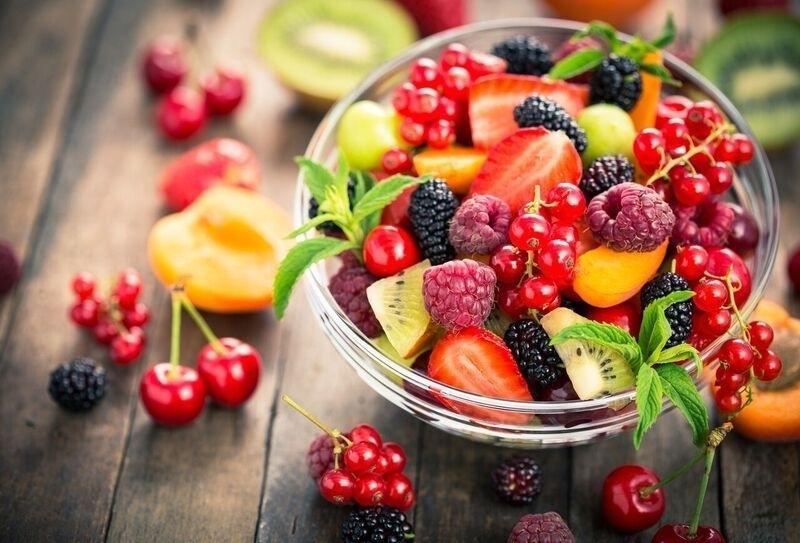Simple Diet Changes Can Treat Hypertension

Simple Diet Changes Can Treat Hypertension
Most people would like to avoid the use of medications for their health issues whenever possible. Dietary approaches to stop hypertension such as the DASH diet were developed for this particular reason. Not only does it provide a healthy way in which to manage hypertension, but it also reduces the risk of side-effects and a lifetime of medications. The DASH diet is a two-pronged approach. This covers what you should not eat or reduce the consumption of, and what you should be eating more of.
What to Avoid
These are the food that may increase hypertension and lead to further complications. It may be difficult to completely avoid all of the following items, but patients should try their best to reduce the intake of these food items to a minimum.
Salt
Too much salt or sodium can cause your body to retain its fluid, which may result in increased blood pressure. The man component in salt is sodium. When sodium is present in the bloodstream, it increases the osmotic pressure of the blood. Increased osmotic pressure makes it difficult for excess water to be removed from the blood by way of the kidneys. Instead, the water and other chemicals are retained in the blood, therefore causing hypertension. It may be difficult to do away with salt immediately because it is used in so many different food products, but anyone at risk of hypertension or already suffering from hypertension should make an effort to reduce their sodium consumption. Gradually reduce your salt intake down to a teaspoon a day, then a half a teaspoon, lowering the amount until there is no salt at all. Healthy people can aim for 2,300 milligrams a day or less. To stay on track, one must choose low-sodium and foods or seasonings with no added salt. Read the nutrition facts on labels carefully. This will help determine if the amount of sodium added to packaged and processed foods is suitable for you or not.
Processed Sugars and Trans Fats
One of the primary underlying causes of high blood pressure is related to your body producing too much insulin and leptin. This is in response to a high-carbohydrate (high sugar and processed food diet). While people on DASH diets do tend to show reduced hypertension, the reason for their positive results may not be solely the reduction of salt. It may also be the reduction in sugar. The same holds true for reducing your intake of processed foods, which are top sources of both heavily processed salt, sugar, and fructose. Both sugars and fats are essential for the body’s development. Sugar produces energy for activities and fat helps in developing tissue. Processed sugars such as those found in fast food are not readily absorbed by the body. This is because they have a more complicated chemical makeup. Instead, they remain in the bloodstream for longer periods of time and deposit along the blood vessel walls. Those who have hypertension should stick to natural sugars found in fruits and starchy foods. They should also obtain ‘good’ fats from sources such as cheese, eggs, fish, and olive oil. These are friendlier to the body and can be quickly absorbed.
What to Eat
Now that you know what to avoid, here are some foods you might want to stock up on:
Fruits and Vegetables
Foods that are high in potassium tend to impart a better ratio of potassium to sodium. This eventually allows the kidneys to get rid of more sodium through urine, which lowers the blood pressure. A person suffering from hypertension must always opt for leafy vegetables such as kale, spinach, and romaine lettuce, which have high levels of potassium. This is essential for the removal of sodium in the body. By increasing your potassium intake, you increase your body's capability to remove excess sodium from the blood. This may even reverse hypertension and regulate blood pressure. Patients should avoid canned vegetables since most of them have excess salt used for preservation. Fresh or frozen vegetables are the best choice for those that suffer with hypertension. Fruit possesses sugar, but it is natural sugar and can be easily absorbed by the body.
Berries, especially blueberries, must also be consumed on a daily basis. If not consumed daily, then in a gap of three to four days at least. Berries are rich in natural compounds called ‘flavonoids’ that prevent hypertension, and possibly help to lower high blood pressure. While fresh blueberries, raspberries, and strawberries are easy to add to your daily diet, frozen berries can also be consumed as a quick and healthy dessert. Bananas are another great way to add potassium to the diet. Eating foods that are rich in minerals is better than taking any artificial supplements.
Fish and Lean Meats
Red meat contains ‘bad’ fat that may contribute to hypertension. However, fish and other lean meats like chicken do not. One should include more of these foods for a good source of protein as well. As a better option, you can always make a healthy salad where you can mix meat with green leafy vegetables and salad dressings to make your meal more appetizing.
Low-Fat Dairy Products
Dairy products usually have a very high fat content, but switching to skim and low-fat dairy products can help to avoid this. The DASH diet recommends increasing the amount of calcium-rich foods you consume daily. Skim milk is an excellent source of calcium that is also low in fat, helping the body to lower the blood pressure.
Whole Grains and High-Fiber Foods
Whole grains provide sufficient starch to produce energy without the added burden of processed grains. High-fiber foods aid in digestion. High-fiber, low-fat, and low-sodium foods are just what you want for lowering your blood pressure. Oatmeal fits these exact requirements. Having oatmeal for breakfast is a great way to charge up for the coming day. On its own, oatmeal can be bland, so you must therefore refrain from adding too much sugar in it. Instead, you can opt to add some fresh or frozen berries to sweeten it up. A bit of honey added to oatmeal can also make for a healthier sweetener.










